Leaderboard
Popular Content
Showing content with the highest reputation on 22/05/20 in all areas
-
Goood moorniiing Viee.... Britmodeller! This is my latest build, literally finished just now: Shenyang J-5, Vietnam People's Air Force, 932 Fighter Reg. Red 3020 (Le Hai) | Tho Xuan August 1969 Kit: Airfix Mikoyan-Gurevich MiG-17F 'Fresco' (Shenyang J-5) (#A03091) Scale: 1/72 Aftermarket: None (T-antennas were taken from Hobby Boss MiG-15UTI kit) Paints: Vallejo Model Color, Model Air & Metal Color, Tamiya Acrylics Weathering: Flory Models Wash, Mig weathering Products, Tamiya Panel Liners Really enjoyed this kit, mostly has good details - only thing that is obvious that is missing is the T-shaped antennas under the wings. But I was building Hobby Boss MiG-15UTI at the same time and luckily it has a set of two so I used the other set. Fit was great, only in the nose some extra care was needed. Painted with Vallejo Metal Color first (Semi Matte Aluminium) followed by Tamiya Clear Coat. Thin layer of Vallejo Chipping Medium applied to selected places, followed by thin layer of Vallejo 71.2289 US Dark Green. Camo spots painted with Tamiya XF-27 Black Green. Chipped the paint using small stiff brush, applied the decals & weathered lightly. And some comparison shots with F-105 Thunderchief: Hope you like it! Comments & constructive criticism welcomed31 points
-
Hi all, Here is the finished TU-128 Trumpeter, the model is not bad at all but is unfortunately decked out with a few errors and simplifications. Nothing complicated to catch up with a few sets but it's a shame because these are small things that would have been simple to do. The size is quite annoying, I think I hit it in all corners of the workshop plus a few other miseries, I was longing to see the end, but i take pleasure to build it and at the end it's a amazing aircraft in the collection.28 points
-
Alclad paint with Xtradecals markings for 23 Squadron. Some Airwaves pe was used as was a resin seat.25 points
-
Here is at last finally completed the model of the Chilean airliner that journeyed the long distances of its South American adoptive country. And a long building journey this was too, given the fact that the Italeri kit is just a hasty and half-way effort to provide the features of the real civil version. All the mishaps and necessary corrections/additions can be visited in the step-by-step building article: The companion Airlines of Australia plane is here: A full interior was provided, and the original short tail had to be modified into a long tailcone. The box art of this kit will completely mislead you into believing that you are acquiring a long tailcone version. Bummer. The most blatant mistake of this old kit is that the two sets of windows were staggered in the original plane, a fact ignored by Italeri that takes a lot of time and some skill to correct. Other many modifications were needed, and of course the addition of the aftermarket Kora set that provides resin radial engines and nacelles plus the decals for this version. On that, I can comment that the fit of the Kora nacelles is not, let's say, comfortable, and if you don't need the decal sheet it provides or the other bits, you are better off buying the radial engines and long tail version offered in one of Italeri's releases (4260). If I had noticed that before, I would have done exactly that. On a secondary note on the decals, the ones provided for the prop blades seem inaccurate, since all photos of the radial versions show invariably a Junkers triangular logo on those blades. Photos show at least two different liveries, the one provided by Kora and another that has a more stylized lettering for "Línea Aérea Nacional" above the windows, instead of on the aft fuselage. Other features can be glimpsed in photos: a LAN big lettering under the right wing, and at least in one machine an anti-glare panel on the nose. I drew immense pleasure from the conversion of a machine of sinister origins and use, into an airliner that happily is not wearing despicable symbols, but instead had a good use transporting civilians and goods, and being useful for peace, not war. LAN (Línea Aérea Nacional) had four of these Junkers, starting flying them in 1937-8 (depending on the source), they were capable of carrying 10 passengers in relative comfort with the necessary sturdiness for the rough conditions that many times the airline industry of the time had to operate in. This old kit as said is not very accurate and it is devoid of cabin detail, having also raised panel lines, but the fit is quite good, and the engineering uncomplicated, which is appreciated. As many other old vintage kits, it can be converted into a fair representation of the original withy some love and time. I would say that the skill required for this conversion is within the reach of committed modelers that had already ventured into some kit-improving and detailing. Provided you invest some time and effort, you can obtain a large number of civil airliners from this kit. As stated in the building article, Kora Models has some sets that cover a few of the choices (not sure how accurate they are, mine had some glitches), but combining different issues of the Italeri kit (radial, inline, short tailcone, long tailcone) and doing your decals you are also set for a nice ride. Since there is so little material about this Chilean machines (I have all what is to be found online, by the way), I am eager to know if fellow aviation enthusiast from Chile could come forth with more photos. For what I can tell, no registrations or logos were painted on the upper surfaces of the wings,. and only one photo hints at "LAN" painted underneath the right wing.24 points
-
Well here she is my version of the Airfix Hellcat. It had to be in the Fleet Air Arm scheme as my house is a solid RN only household. I used the Airscale cockpit set, Master gun barrels, Montex Mask set, HGW seatbelts, Anyz engine dress up set and a brass and resin undercarriage. Happy with all of that except for the cockpit set as it just isn’t that visible on the finished kit. I have a spare set of the undercarriage as I ordered 2 by mistake if anyone wants them. Thanks for looking.23 points
-
I Still have to add the Junkers prop logos (the Kora sheet has inaccurate Hamilton Standard ones) and some lettering missing from the Kora decal sheet, that I had to commission from Arctic Decals. I also have to do some light weathering and exhaust stains, but that will be in the near future, together with other airbrushing sessions.23 points
-
Hello all, Here is my recent completion, a 1/72 Airfix Beaufighter using DK Decals to show a 455SQN RAAF machine. I didn't lash out on this one, just masking tape for the seat belts and EZ line for the antennae. I also learnt that it is very difficult to mask and airbrush straight lines. I've only done this once on a 1/72 Typhoon which I did a few years ago, but with a bigger aircraft comes more paint (and finger prints). Also here is a handy tip. If you airbrush yellow paint make sure the airbrush is super super clean before your spray your gloss cote, even if you have cleaned it thoroughly. Otherwise after a pass over the white invasion stripe it may or may not end up with a yellow tinge to it (so I have heard from someone ). But after a little bit of weathering it blended in. I like how the colour turned out which is lucky because I just started the Airfix Phantom FG.1. I also have another Beaufighter which will be a 31SQN RAAF aircraft from the same DK Decal sheet and in the same colours. Thanks for looking, stay safe and wash your hands! Jay Gee.22 points
-
Hi all, here some pics of my Eduard/Revell Tornado F3 in 1/48. Used the PE´s/Brassin sets OOB and add a Master pitot and deacls for an Italian Air Force version from an older Italeri Kit. From the original aircraft I took some nice pictures while the NATO Tiger Meet`98 at German Air Base Lechfeld.19 points
-
Built from the 1/72 AMT kit, the only mods I did were to sand out the terrible windscreen panel etching and file flat the panels (which is a big issue with this kit). I also sanded a 'pinch' into the radome as the nose looks too fat. I also added the antennas for a Desert Storm period aircraft.19 points
-
Okay, this needs some explaining to do. This B767 Zvezda was the first 'conscious life' kit, bought 10 years ago. Back then I had very little idea about the whole hobby industry size and put it together 100% out of the box. Probably skipped a lot of tiny details. During the recent shelf revision I took a closer look and it was painful to watch. While the principal assembly was okay there were gaps everywhere (no putty at all), the tailfin was split and wouldn't stick together even when I managed to cut it all open (thanks to a poor Zvezda glue), the KLM livery was all over the shop, I even question myself if I was on drugs at that time (probably, not), the paintjob was terrible. So she couldn't be on a display but I either felt bad thinking about throwing her away. A decision was made to do a salvage job as good as I can. I scraped all the paint off, filled all the gaps. Restored couple of spoilers, rebuilt half of the tailfin, made some antennas, that's as far as my skill goes. Then I've got British Airways livery from Ascensio (highly recommended if you'll ever come across it) and technical details sheet from Pas-decals. I had a long big doubt about the beautiful Ireland livery so I went on with the standard one (Chapham, I think?) Some mistakes I couldn't undo, I believe the MLG doors were mixed up and the engines are GE instead of RR of course which is a shame, but I decided to let it go. Also it lacks the nose ballast so it's tail heavy as expected Repainting was quite a painful job, took like A LOT of tape masking. There she goes in her second 'airline'. I'm quite satisfied with the result. The only photo I could found of the old look which kinda hides most of the issues in the depth of field. That nice take-off look!18 points
-
"AUTUMN 1984 - STRIKE" AJ 37 Viggen, Swedish Royal Air Force, F6 Karlsborg Kit: Special Hobby AJ-37/SK-37 Viggen Duo Pack (#SH72411) Scale: 1/72 Aftermarket: Master pitot, Moose Republic decals, weapons from Airfix Viggen & Marivox Saab 105 Paints: Vallejo Model Color, Model Air & Metal Color - and Tamiya Weathering: Flory Models Wash, Mig weathering Products Very good - if somewhat complicated kit with couple of problem areas. Very nice details. Scratchbuilt display base. Built for Nordic GB. Build thread here: Thanks for looking! Comments & constructive criticism welcomed16 points
-
I built this one eons ago and really enjoyed it, I originally painted it with Polyscale acrylics and used the kit decals. Unfortunately it lost one of the landing gear during a move so it sat on the shelf as 'ole peg leg for many years, however a little while ago I thought I'd see if somebody had a spare landing gear and, amazingly enough, someone did. With that, and lookin at how it was showing it's age I decided to give it an update with some new paint and decals. Things didn't go as well as I'd hoped, suffering from some broken bits and a bit of a disaster cleaning the rear canopy. Despite the few setbacks I managed to finish it up and I'm quite pleased with the results. Finished with Mr.Hobby paints and a combination of Brengun and Airfix decals. And here's how things started out14 points
-
Probably my favourite airliner, to me the Pan Am 707s represent a cool Americana image, and the American dream. Station wagons on the drive of 50s dream homes, neat gardens and pastel yellow cardigans, glamorous stewardesses and all the retro cool of that era. For this model I used the Airfix British Airways 707, pretty much out of the box but with the superb 26 Decals so kindly donated by @stringbag.14 points
-
14 points
-
14 points
-
It's been a while since I posted here, been pretty busy with life in general. I was getting a bit overwhelmed with including as much accuracy and detail in my builds as possible. I needed a way to relax and still build. I came across an old folder of mine from a very long time ago. Back when I were a lad I joined a local model club in 1975 to help grow my modelling skills and get to yak to like minded people (there were girls in the club too). The club had a particular type of build, a very strict "From the Box" comp throughout the year. And after reading through a couple of pages of hints and tips and other trivia I came across the pages for the "From the Box" builds and the rules long forgotten by meself. Being I like old kits (I have a "few" in the stash) and as I said I was stressing about my flock of current builds and the difficulties I had created for myself with advanced cases of Researchitis and AMS, a germ of an idea started. The most relaxing way I could think of was to build a few models without embellishment OOB as it were, no stress, just build, paint etc. Didn't actually work out that way in the long run but help it most definitely has. First off, the rules for an Out Of the Bag/Blister/Box build, (slightly edited by me to make it a bit clearer than originally written) 1) Build with ONLY what is in the box, NO additional pieces allowed, 2) ONLY use a paint colour scheme from the kit's instructions, using the colour call outs provided. I've had to make a small change to this rule as it is not possible to use the paints specified by many older kits as the manufacturers may no longer exist or the particular paint range is no longer manufactured and readily available so I can use modern day equivalents to the original paint colours. 3) Only use the kit provided decals, 4) Weathering is allowed, 5) Varnishes are allowed, (not something you saw back then often in the land of "silvering" and after a while "falling off" decals), 6) Use the best skills and techniques possible to get the best result from the model, 7) Above all, HAVE FUN!!!! So I selected three models, and over a period of weeks started them. Although the builds ran into months with some "challenges along the way, along with trying out new and or modified techniques to attempt to get the best out of these old kits I actually had fun too. They were all Airfix 1/72 scale kits from the 60's and 70's although one of the mold tools came from 1958! Airfix 1-72scale Focke Wulf Fw 190D Dora Kit 01021-0, the 1958 mold, started 01Dec2019, finished 09May2020 (a blister pack kit issued in 1973?), 165. Finish by Neil, on Flickr 166. Finish by Neil, on Flickr 168. Finish by Neil, on Flickr 173. Finish by Neil, on Flickr 176. Finish by Neil, on Flickr 181. Finish by Neil, on Flickr 187. Finish by Neil, on Flickr 189. Finish by Neil, on Flickr 191. Finish by Neil, on Flickr 204. Finish by Neil, on Flickr 205. FinishOOB by Neil, on Flickr And lastly there is 50 years between these two builds of mine, fiftyoneYearsC by Neil, on Flickr Thanks for looking, more soon, Regards all, FAA13 points
-
Thanks Heather, Bill, Keith, Terry, Trevor, Ben and Adrian You can see the problem here: Touch-N-Flow for me: Their 'weld' stuff is hotter than TET and seems to dry faster than anything (apart from CA). I do use tube glue (at Bills' recommendation) for things that I need to wiggle (fnaar) and TET for small parts. Of course I've got the others too (as you'd guessed) but they've moved to the back of the bench: Plenty of spares too: Closed up now and drying - we'll see what we have later…13 points
-
13 points
-
Next up from the Wednesday trip to the airport is another Testors kit from Hawk, this time from 1960. My Testors kit was issued in 1982. The aircraft is the well-known rocket-powered interceptor, the Me163 Komet, in 1/48 scale. This kit had only about 25 pieces and the instruction sheet had good four-view drawings for four different color schemes and some actually pretty good decaling and weathering tips. I chose the simplest of the four: Me-163B-O V-41, Eprobungskommando 16, Bad Zwischenahn, May 1944. (flown on first operational Komet mission according to the instruction's notes) I believe I’ve read that the all-red paintwork was done as a tribute to the World War One ace, the "Red Baron", Manfred von Richthofen. The only addition I made to the kit was adding the two cannon barrels. Other than that, it was straight OOB. I remember building this in the winter of 1989-90 at the kitchen table of my grandmother’s house where we lived while our house was being finished, and she was living in a nursing home. Again, I added a poorly painted ground crewman (never thought he would see the light of day...), from the Monogram Me-262 kit to add a sense of the true size of the little “power egg”; a plane that seemed as dangerous to its pilots as it was to the enemy. I knew a former WWII top-turret gunner in a B-17, here in our hometown. I once asked him if he had seen any of the German jets or rocket planes. He said he had but they were so fast, he was never sure if he had hit any! The wind played hob with the Komet at the airport. It wobbles on its take-off dolly anyway and the wind kept it moving up and down. I expect some pics might be a bit blurry. I expected her to actually take flight any minute, lol. That photo session was cut pretty short and I only got a few pics but that’s okay. The model isn’t really worth too many pics at best and I had one more plane to photograph. 😉 So, with no further ado, here’s my Komet at the Cameron Airport. Thanks for looking in and please leave comments, good and bad! 😀12 points
-
Hello. T-55 A finished. will post some pictures of the painting/weathering steps in the appropriate topic. cheers !! 🖐️12 points
-
Just finished my latest project - one of my very few 1/144 models. This one is breeze to build - just shake the box! Painted with MM Gunship gray and weathered with oil paint's wash. Tiny, tiny cockpit, but still visible, so I had to address this and to add some details (seat belts, control columns) Overall a nice, easy and quick build. Great company for my 1/144 B-58 Hustler11 points
-
Corgi released this model in their Aviation Archive series in 2011 in the markings of 22 Squadron Search and Rescue at RAF Finningley. The bright yellow Rescue Whirlwinds from RAF Leconfield in East Yorkshire were a familiar sight to me as they flew up and down the Yorkshire coast in the 1970s where they were ready to come to the aid of anyone who needed help, including me and my step dad. My step dad had acquired a large powerful rubber rib boat and he decided that we would take it out into the sea at Robin Hoods Bay one Saturday afternoon. So we launched it in front of a large audience in the bay and just myself and my step dad set off, my mother and sister had more sense and stayed on the beach. Out in the bay the motor cut out and would not restart and we ended up having to row this large heavy boat back to shore with the oars that were only about 3 feet long. And then this RAF Rescue Whirwind suddenly appeared over the bay heading home from a mission, they flew right over us, had a look and must have decided we were okay and carried on home for their tea. We eventually got back to the beach and our audience. And when I was in the Air Cadets we went out on a RAF Rescue launch which was based in Bridlington harbour and met up with a Rescue Whirwind off Flamborough where some poor chap had to keep falling into the sea to be picked up by the Whirwind and deposited back on the launch. Happy memories. Corgi did a very fine job of the Whirlwind considering the constraints of it being a die cast metal model. So I proceeded to take it apart as usual to do my thing to it. So, remove the caps covering the screws under the fuselage, remove the screws and the fuselage comes apart. The breakdown of the fuselage parts allows Corgi to make other versions using the basic fuselage casting, with the nose and cabin sides being interchangeable. We can see the fuselage under panel where I am attempting to file off the Corgi stamping. We also have the black plastic cabin floor, the plastic seats which are not required, the plastic cockpit roof which is glued to the fuselage and has to be removed very carefully, the instrument panel and crew. We can just see the cabin insulation and the transmission tunnel. Doorway handle from fuse wire. I added detail to the cockpit and repainted it. I added cabin sound insulation by glueing silver foil to the cabin roof and sides and painting interior green. I also added a transmission shaft tunnel and found a suitable 1960s crew man for the cabin. And then I put it all back together again, added aerials and repainted parts of the airframe. And here she is ................ Wheeled out of the hangar onto the apron. Engine testing On readiness at RAF Scarborough waiting to go to the assistance of people in boats, on cliffs and in the hills, and the occasional jet jockey who decides to take a bath in the North Sea. It is always a good idea to have a road map in the cockpit. Someone needs assistance, launch the Whirlwind. Jet pipe temperature good, oil pressures good, engage rotors Starter trolley unplugged, give the man a wave and tell him to get away, clear to take-off on runway 220 ................... eh Power on and off we go .......... and don't forget to bring back some fish and chips ................... Taxiing in on return to base My little airfield diorama. Buildings made from paper card, Airfix Landrover, BW Models white metal kits crash trucks, and Oxford diecast cars. And that has been my Corgi Aviation Archive Westland Whirlwind HAR Mk10, hope you liked it. regards, adey11 points
-
This is my first post for Ready for Inspection. I've finally getting getting back into it. My subject is a Red Roo Conversion used for the 458 Squadron Wellington as depicted in the DK Decal sheet (72066). The kit being the Mk1c Airfix. This version was of the Mk1c with canvass and metal fairing with a single .303 gun which replaced the normal turret. I will do the MkVIII next. A little bit of history, 458 Squadron was formed at Williamtown, New South Wales, as part of the Article XV of the Empire Air Training Scheme agreement on the 8th July,1941. The squadron went to England on the 25th August, 1941 at Holme-on-Spalding Moor where it was introduced to Wellingtons. At the end of January, 1942 it was sent to the Middle East engaged in mine laying, maritime patrols and convoy escorts. Hope it passes.10 points
-
Well I'm calling this one done, thank you for all the support along the way, especially @vppelt68 for the replacement props and @Dave Swindell for the help with colours. Pictures below, I hope you enjoy them let me know what you think. Cheers Pat10 points
-
Latest build Had to wrestle this one into submission. Mark DSCN3717 (2) by mwsfly9, on Flickr DSCN3714 (2) by mwsfly9, on Flickr DSCN3713 (2) by mwsfly9, on Flickr DSCN3716 (2) by mwsfly9, on Flickr DSCN3718 (2) by mwsfly9, on Flickr DSCN3719 (2) by mwsfly9, on Flickr DSCN3720 (2) by mwsfly9, on Flickr DSCN3722 (2) by mwsfly9, on Flickr DSCN3724 (2) by mwsfly9, on Flickr DSCN3727 (2) by mwsfly9, on Flickr DSCN3728 (2) by mwsfly9, on Flickr9 points
-
Ok. Here we go guys. Managed to do some very intensive building and painting over the last couple of days and this is what I've managed to put together. It looks complete but it is not. I still have to include the overhead crane, a couple more extra details, corrugated sidings at both ends with some details, and a welder figure. But so far, things are looking good. What do you think?9 points
-
Hello all, Here is my recently completed 1/72 Airfix Lancaster B.III Special of 617 Squadron 'The Dambusters'. ED932, AJ-G, was the mount of Wing Commander Guy Gibson, VC, DSO & Bar, DFC & Bar for Operation Chastise on the night of 16/17th May 1943. Extras used included an AML camouflage mask along with an Eduard canopy mask and interior etch set. Paints are a mixture of MRP and Tamiya. This kit proved to be a bit of nightmare for me, with numerous things going wrong. Despite that, I'm happy with how it turned out. The build thread is here Beside the Tallboy armed Hasegawa kit: Thanks for looking. Dave9 points
-
Please find my latest completion Italeri's Grumman Avenger in 1/48 Scale. The kit was nearly built out of the box apart from a P.E. seat harness and decals by Print Scale for the insignia and markings plus a Techmod sheet for the stencilling since most of the original decals were not usable anymore from this ebay purchase. (Which was made clear to me prior the purchase which was at a reasonable price) Had some trouble with the windows, which required a few polishes with Tamiya polishing compound after which there were still some blemishes apparent. I once came across an article or video where they did some "after" polishing with car wax (Carnuba wax). So I thought I would give that a try and it did have some effect on these windows. Unwittingly I then used my polishing cloth to wipe some dirt of the wing........................... which resulted in wax on the wing, which I was unable to remove. Since The wings were meant to be specular sea blue. So I thought...............Why not wax the wings? Subsequently I accidentally got some wax on the fuselage as well......😬 So decided to apply the wax on the entire model in a last ditch effort to save the model. I am curious to know how you think it worked out. I would not repeat this method, but one pleasant side effect was that the gritty-like sprayed paint on the wings (Should have thinned the paint a little more) and some orange peel effect was totally eliminated. Turned super smooth. So something to keep in the back of the mind. Paints: Mr Color and AK real paints coated and polished in Simoniz Car wax! I did use an Eduard mask for the windows as well............ That's all, thanks for watching. Regards, Rob9 points
-
I'm sure most of us have seen Spitfire 944 short film, which is here if not what I have not seen posted here (and apologies if I missed it) is this, which is 4 mins in color, and has some fascinating images. in the screen image above, note the aluminium paint inside the camera doors, and the whole thing is a diorama makers delight, particularly good for uniforms and general airfield details.... hmm... now i did stash some 1/48 ex-Bandai bagged jeep kits, and have still have some old Monogram bomber kit USAAF figures. (somewhere...) .. as well as having multiple Airfix PR XIX stashed.. Hope of interest9 points
-
This little air racer was built back in the early 1990s and had never been photographed before May 20 of this year, yesterday in fact. I don’t know why I had overlooked it all these years but I decided to rectify that by a trip to the airport. On Wednesday morning, I loaded it and two other never before photographed models into the Isuzu Trooper II and took them to the Cameron Municipal airport. I got there about 10 am and the wind was beginning to gust a bit. There were several planes parked there and a nice gentleman was fueling up two others. The kit is the ancient Testors (first release by Hawk was in 1949) 1/48 model of the Howard “Ike”. My instructions are dated 1976. The Ike was first introduced at the Thompson Trophy Race in 1932. Spanning 20’6” with a fuselage length of 17’, the little racer would fit in many living rooms today. With Harold Neumann at the controls, Ike , wearing racing number 39, finished fourth in the 1934 Thompson Race, with an average speed of 207.064 miles per hour. The structure was steel tubing covered with fabric and she was powered by a Menasco B-6 inline engine of 489 cubic inch displacement. It was built by Ben Howard in Chicago, Illinois. https://en.wikipedia.org/wiki/Howard_DGA-4 http://www.fiddlersgreen.net/models/aircraft/Howard-Ike-Mike.html I don’t remember a whole lot of the details about building her back then. I did scratch-build a cockpit, including seat and IP. I drilled out the exhaust openings and did a little weathering. The rather crude wire bracing is very thin strips of galvanized sheet metal glued into place. (I found the port tailplane brace missing when I arrived home. oops! Its absence is obvious in a few pics-sorry 'bout that!) I wanted a pilot figure to give an idea of her quite petite size and in these pics, a WWII Japanese airman stands in for a ‘30s pilot. Oh well. 😉 Please excuse his amateurish painting and yellowed clear base, but it does demonstrate the small size of the little racer. So, here she is, finally out at the airport. Thanks for having a look and please feel free to comment!9 points
-
Now then Courtesy of Timmas's magic we have a new versio of the test print Using Plantin he has given me the real thing to play with. I have darkened the blue in order to get close to a match with the dark blue tops of the aircraft's scheme Viola! Ecce transfer blank. A few size modifications to do, judging by the photo on the preceding page but not bad at all.9 points
-
THIS STUFF Ever heard of it? i think we get too clever by half with our superstuff and mix-n-match compounds to give adhesion under 500 fathoms of water and acrylic paints. This stuff is of the exact same vintage as the Airfix Catalina and is as sticky as you need with clamps, vises and obscure forms of origami hold-em-tights. As Heather suggests, use tube glue and abandon the ways of the tool modelling ninja. Just on bloddy awkward fits like this if nowt else!9 points
-
Hi guys, I use the lockdown period in France to diminish my stack of unfinished kits, this is the last completed: it is the Seafury kit from Airfix in the foreign service boxing. I used a resin cowling resin wheels from Barracudacast. The first step was riveting the kit, which I would not do it again, since photos of Seafuries show a very smooth skin . The cockpit was built from the kit parts, since very little remains visible anyway, but I spend some time with the wheel wells, to replicate the intricate plumbing and wiring. I used fly tying lead wire to reproduce the various tubes.To reproduce the Hawker yellow, I mixed Gunze H74 Sky with Tamiya XF4 yellow green. I used the kit decals to depict a RCN Seafury with a low demarcation line between EDSG and Sky. Ironically the first Seafury I built more than twenty years ago was the Hobbycraft kit, that I also finished in RCN markings. One can see the tremendous improvement of the Airfix kit over Hobbycraft. I used Gunze Sky H74 and a mix of Tamiya paints that I found on the web long long time ago, it was attributed to Roy Sutherland. After struggling with various brands of gloss varnish to obtain the glossy finish I wanted, I finally decided to use the tried and true Klear, applied with a flat brush, which I think turned out well. Have a nice weekend, Christian.9 points
-
Finally, a bit of progress this week. I missed a conference call at 7:30 pm, but as I’d just got off a two hour plus network debugging call at 7:15 I don’t feel too bad about it! Filled in the big gap behind the wings where I lengthened the fuselage and got some Milliput over it all: The undercarriage legs and axle bearing are moulded flat so I cut a wedge off the bearing and stuck it to the back to make an angled one: Rear cabane struts are mounted rather high so I’ve filled the holes: and here’s the bottom with a new radiator bath to slot over the kit one: You can see I’ve had to mess with the strut locations under the tailplane. I need to find what hatch detail I need underneath and get it stuck on. Tomorrow morning I will try to get rattlecan aluminium over it first thing before turning the laptop on. I'm itching to see whether my new chrome rattlecan will do the job for shiny cowlings.9 points
-
Hey folks. 🥂 I have taken a few days off as my half term holiday has been canceled and I haven’t Had a break yet this year. Working from home is still working right 😇. I shouldn’t grumble I’m busy and many are struggling. we took the van out today as it was so hot and walked along the river. Not many people about and social distancing was still stuck too. Lovely day though. 🤩 The paint I mentioned was this. I was indeed drinking a half of cider when I made my post last time. I was going to run upstairs and grab a pic but I was just tooooo lazy. 🦦 I didn’t mention last time but this happened while spraying the primer on the engine bay. Could have been worse eh. Could have been the other side. 🤦♂️🤦♂️🤦♂️ I can paint that again. 🤪🤦♂️ Now back to paint👨🎨. I figured I had the right colour for the top side. EDSG as it happens. I’d seen the letters but didn’t know what it meant. “Extra Dark Sea Grey“. As pretty much everyone will know. Tamiya don’t do one. But there are two mixes. One needs 50 drops of one paint mixed with a few drops of others. (Crazy mix) the other one mixes just two paints in small measure. I did this test but it looked wrong so. “I ordered paint” here is the test. The blue is the Tamiya mix the grey is the Mr Hobby Colour. I’m glad I ordered.🧐 Now here’s the thing. Initially I was headed here. I would love to do a shark mouth as I have never done one but I never felt the love for this one. Plus it has a white belly. Not terrible but I fancied a sky underside. so in honour of @NAVY870 I think I’ll change to. I’m loving the yellow on this one too. Plus I get to do sky intakes. Those Roos too. 🦘 I did make a little rib thing too. Need to paint that. Greeny grey? I think that and some silver. Oh and just when you thought I’d bought enough plastic over lockdown I had a major wallet malfunction. I didn’t mean this to happen but the same person was selling some bargains on the bay. I really wanted this! The worst thing you can do after finding a bargain is look for. ........ ...... ”sellers other items” 🤦♂️🤦♂️🤦♂️ so after a few sweaty minutes of last minute bidding I got some combined postage action. Here’s number two. Oh man!!!! That’s a doosie! 😍 and then the wild card. My first Hasegawa and mad as a balloon! 🎈 love it!!!!! 1/32 This aeroplane must have been tiny. Right no more! No more. 🤣😂 everyone else is at work tomorrow so I’m planning some Venom action. Oh I sanded an did a test spray of the Gap. Pretty good. 😍 Thats it for you tonight. More tomorrow. Thanks for dropping by. Hope you are all staying safe. Take care. Johnny boy. 🥳9 points
-
Started another project. This is Rye Field's new Challenger II TES Megatron. Looks interesting so far and fairly involved. Working suspension and working individual link tracks, nice but who cares? Got the 3 piece lower hull assembled and added some fittings to the rear plate. Need a break.8 points
-
Matilda T6943 ‘Filibuster’, 49th RTR, 35th Army Tank Brigade, UK 1942 After a couple of complicated builds I was looking for something that would be straight forward to assemble that I could then experiment different weathering techniques on. The Filibuster option in SCC No.1A/ SCC No.2 Brown also fitted in with my goal of building a representation of all the AFV's used by the British, showing as many different camouflage schemes as I can. I can see why the Tamiya Matilda is so popular as it is very well engineered and goes together so well that it only took a couple of evenings to complete the building stage. The model was then painted with Mister Paint's MRP-345 and MRP-346 Everything was going along nicely until I reached the decalling stage when I managed to destroy one of the Filibuster decals. But I was also very disappointed with the Tamiya decals, the carrier film seems to be very thick. At this point I also discovered I had a photo of Filibuster and was dismayed to see that not only are the red squadron triangles supplied by Tamiya clearly not red on the original tank but it also appears likely that she was painted all over in Khaki Green No.3. I couldn't face repainting the whole model but I did decide to remove the offending decals, which I have to say had stuck very well. I made stencils for the Triangles and the number one (I guessed yellow was the right colour), the 'Filibuster' name that I had damaged and the brigade signs. I also changed the bridge weight sign to better match the yellow I used on the triangles and added a WD number to the number plate as I had seen photos of this practice on another Matilda. I decided to alter the front fenders by filling in the kits cut out ones with plastic card to match the original. I couldn't be sure looking at the photo if the front lockers are the vented ones but decided it was too late to alter them anyway, but I did add a couple of handles. I'm not sure if the kit has the right gun mantlet for Filibuster either. I added a few rivets and some wire to the smoke dischargers and thinned out the end of the tubes. The number plate was replaced with a scratch built one for better scale thickness ( I know it's wonky I kept knocking it off) and I added some detail to the aerial support (not sure how accurate it is but I copied one from an A10 cruiser). I also wanted to try making my own stowage for the rack so I made some tarps and bed rolls from miliput and a camo net from some old plastering scrim tape. I know heavy weathering isn't to everyone's taste but I wanted a dirty but dry look similar to the photo of the original. I tried to achieve this with a combination of thinned paints, oils and pigments. During the first photo shoot I managed to break both tracks and try as I might I just couldn't make a satisfactory repair so I ordered some of Bronco's workable tracks which I found to be much better than the link and length ones supplied. I decided not to post the comparison with the original photo as I'm not sure about infringing copyright but the original one that I found is in the Squadron /Signal publication British Tank Markings and Names by B.T. White. Comparing my black and white photo with the one in the book you can see why it is difficult to ascertain exactly what colour scheme 'Filibuster' is in especially as she is covered in mud and dust. As always critique and any advice is more than welcome. Wayne Edit. @Ian C pointed out on his Matilda Mk.III build that British based Mathilda's didn't carry the external fuel tank. I can't believe that after all of the studying of photos that I did for this build I missed such an obvious thing. I have now corrected the model but I wont photograph it again apart from the one below taken with my phone.8 points
-
Hi all, Finally, time has enabled me to get my Skyraider across the line 😊. As you will have seen in the WIP (below) she is one of the former Armee de l’Air (French Air force) machines that were acquired by the Groupment Aerient Presidentiel de Gabon (GAP). Eight aircraft were on GAP strength over time, with four machines, colour-trimmed red, blue, green and yellow, being the longest serving. They flew as part of a broader and varied GAP fleet that included, at the time, other types like the Banderainte, L-100/C-130, Harvard, Fouga Magister and others. These were the last active and armed Skyraiders world-wide, being retired in the 1980s. For those who are interested, TR-KFP “green” is now F-AZDP in France, TR-KMO “blue” is G-RADR in the UK, TR-LQE “yellow” is in France and TR-KMP “red” now resides in The National Museum of Naval Aviation in the US, having been impounded by customs. A sad end for the old girl . Of the others only one was lost – TR-KFR on 14th July 1978 in Lome. They were flown by contracted French pilots, the most well-known of these being Jacques Borne. Jacques was the flight commander and was an ex-Armee de l’Air mechanic (on H-34/HSS-1) and pilot, having amassed more than 6,400 hours on a number of types, including the Fouga Magister, T-6/Harvard, Mirage IIIB/C/E and IVA, and T-33. He maintained a nickname through his career of “Sarcife”. You can see more about him here, albeit in French: http://www.pilotedechasse.org/2017/06/en-vol-avec-sarcife.html and search "sarcife". Google Translate is a great thing! 😊 The subject of this build is Jacques’ machine, TR-KMP “red”. She was an AD-4N. She is built from a Hasegawa A-1H Skyraider kit, supported by some parts from a Sword AD-4W. The latter is a spare ship for this and other builds in the future. For this build I used the side doors, leaving one “ajar” so that it has a little more detail interest, plus the main wing pylons. For the build I have been supported superbly by Jacques’ son, Fred. He provided me with many images of these aircraft, some of which are also available online, and answered questions along the way. Here she is in a shot taken during her Gabonese career: What did I do/use? Well, here goes: a. Inserted the starboard side door section from the AD-5W, cutting the port side door aperture (slightly too low ☹) and used the AD-5W door b. Built the internals for the rear cabin in a generic sense. Used Kristal Klear for the side windows. c. Added different antennae top and bottom of the fuselage. d. Removed the “pitot” and light from the fin tip. e. Used a F-84G wing tank (thanks @Wez) for the belly tank and made the AD-4 shackles from Plastrict rod. f. Built T10 rocket rails and cables with Plastruct rod and wire. Used the AD-5W main wing pylons. g. Used an Aires cockpit set h. Added static wicks with wire i. Re-scribed per AD-4N j. Painted the red trim rather than using decals k. Here and there, as appropriate, I dry brushed with aluminium, black and red. I also left the Flory wash more intense in places to mimic the dirty(ish) conditions of the aircraft. Unusually for Skyraiders she did not have much oil or exhaust staining, as you can see from the above photo. l. Added the foot steps behind the wings, using brass rod. m. Drilled out the cannons and exhausts - Thanks for the prompt Stuart @Courageous 1. Kits – Hasegawa A-1H Skyraider (00780) and Sword AD-4W Skyraider (SW 72126) 2. Decals – Zotz Skyraiders over Africa set (72026) for the national insignia, lion motif and stencilling, Modeldecal French numbering set (No.63) for the “MP” ID letters, Xtradecal black lining and red lining for the walkways, etc. 3. Extra parts – Aside from the side doors – I used a modified F-84 underwing tank to represent the large belly tank used by the French, various antennas and dorsal intake from the spares box, Plastruct rod for the rocket rails, belly aerial poles, belly tanks saw braces, electrical copper wire for the rocket rail charging cables and static wicks, and a few other little bits and pieces. I used an, Aires A-1 resin cockpit. 4. Paints – Humbrol Metalcote Polished Aluminium (27002), Colourcoats Matt Black, Insignia Red, Interior Green, plus various other paints for small details. Humbrol Glosscote and Satincote. 5. Weathering – Flory Dark Dirt and Light (mixes), Tamiya Weathering Powders, Prismacolor Silver pencil (PC949) 6. Colin @Colin @ Freightdog Models kindly donated a couple of Aero tanks but I needed the larger belly tank. I'll keep these, with his agreement, for a later AD-4B build. Thank also to Mike @72modeler for some valuable data. The WIP is here: I hope you like her. Having got this build done I am now working on Jacques’ Fouga Magister and will then add a Harvard/AT-6D to the Gabonese fleet in my display cabinet. 😊. I hope you like her. Martin8 points
-
"SUMMER 1982 - INTERCEPTION" CF-104 Starfighter, Royal Norwegian Air Force, 334sq Kit: Hasegawa F-104J/CF-104 Starfighter (#D16) Scale: 1/72 Aftermarket: Master pitot, Eduard photoetch, Reskit wheels, Vingtor decals Paints: Vallejo Model Color, Model Air & Metal Color Weathering: Flory Models Wash, Mig weathering Products Good kit, a solid choice for 1:72 Starfighter. Early 80's was the last years of the Norwergian Starfighters - conversion to F-16 was already happening. Scratchbuilt display base. Built for Nordic GB. Build thread: Thanks for looking! Comments & constructive criticism welcomed8 points
-
Up to my usual standard - schoolboy. 🤣 I haven't made a biplane since the old Dogfight doubles of my youth, and surprisingly my wife quite liked it. I suppose it does look pretty different to the usual WWII fare. The model itself was like a step back in time, which to be honest, I don't mind at all as high quality models are a bit wasted on me. Even the instruction sheet was mostly written instructions that bought back the old models of yesteryear and which I found quite quaintly pleasant. I shall be buying more of this make for its olde tyme feel. Look at that flash on the sprue! Anyway I can't put it off any longer, here is my Supermarine Walrus MK II in all its glory. Well not all exactly, as the some of the decals fell to bits so I had to use what was left! It is supposed to be the RAF air sea rescue variant but Gawd knows what it is now. And as for the rigging - Forgettaboutit! A bit of lighthearted counterpoint to the frankly wonderful quality modelling usually on show here.8 points
-
This is my interpretation of the HobbyBoss 1/48 BF109 F-4 as flown by Gunther von Maltzahn, Geschwader kommodore JG53 from Sicily (and also Sardinia, I believe) around 1942/3. OOB build, using the kit decals. The kit was a little frustrating at times, the canopy was a poor fit (and remains a poor fit, even after extensive sanding) and I will never use HobbyBoss decals again if I can help it, as I get the feeling they are only being held on by the clear coat. One of the swastikas disappeared while I was rubbing the tailplane down after an oil wash (despite being under clear coat) - fortunately, I had a spare from another decal set, although the match is not 100%. The aileron counterweights are missing - one launched itself out of my tweezers as it was about to be fitted, never to be seen again. So I didn't bother to fit the other one. The canopy could be clearer - there seems to be a lot of marks left after the masks were removed, which I can't seem to get rid of. Finally, this was also my first attempt at airbrushing (RLM74/5/6) which seemed to go ok, but I'll let others be the judge of that..8 points
-
This is not the first kit I build. There were kit before this one. There are kits I build with my father, kits of Sukhois, airliners and flying boats of east german origin. I recall a mighty Tu-2 on my shelf. I reach back in my memory and remember a silver J-35 as the first kit I ever got in touch with I remember Polish Łoś bombers, Czapla reconaissance aircraft and badly designed Yak fighter kits. I remember a Matchbox Hawker Fury, the fist "western" kit i came in touch with. I am not even sure if I build all those kits or I let my father build them for me for the better part. I remember the first kits I build on my own during a stay in Canada : the Monogram SR-71, the Italeri F-15. I would love to rebuild them both, however these are not the stories to be told here. The story told here is that of Lady Jessie and the Rhino. Lady Jessie was the kit my dad got me as a gift after our familiy got reunited after a year of separation due to work assignments of my parents. This coincided with relocation to Germany where I could at last pursue the hobby "properly" and paint the aircraft using paints from the whole Revell range. Lady Jessie an A-4F Skyhawk from Revell was the kit I decided would be my first serious build. I was actually quite proud of the build at that time brushed with shiny enamel colours fully decaled it was my whole pride. And while the front wheel broke of several time and the strut got shorter and shorter each time the model is still with me (found not so long ago in the attic). Sice the tooth of time nagged on the build, with fading decals, and apparent shortcomings of my build at the age of ca. 14/15 I intended to rebuild Lady Jessie as soon as I returned to the hobby. Sadly I could not find any modern kits in this livery in my 1:72 scale. And then this GB comes along. With the sipulation to use the same, or closest kit. I knew what I had to do. Take a trip to the e-bay, and lo and behold there was ONE auction where my Lady Jessie was offered. Boxed as I rememberd it from 1990. I shall build a new Lady Jessie as I did then OOB. However I shall improve the build as best as I can I want to give the Lady the attention he deserves and let her beauty shine. And then there is the Rhino, the Phantom the second model i build after Lady Jessie As far as I remember (I was fixated on carrier borne aircraft then) This one I also found in the attic in a surprisingly good shape and while I didn't find the exact same kit I found something even better from Revell (Isn't it funny most British modellers started out with Airfix kits, German modellers with Revell, french Heller I guess and italian probably with Italeri). They recently reissued the same mold, but with an even more striking livery. So this will make my shelf. I hold this kit in the highest regards, as it allows a myriad of options not found on most of the other kits in this scale: Lowered flaps, open cockpit, extended (well, slightly) speed brakes. And while the panel lines are raised (and I am NOT rescribing), this is still the best 1:72 Phantom for me. And here a group picture of the beauty and the beast.8 points
-
This is another recently completed build. Its the Airfix 1/72 E-3D built almost OOB I did a few mods to the kit: updated the antenna fit for a 2005 aircraft reshaped the engine nacelle vortex generators reshaped and repositioned the wing HF antenna mounts Decals were from the kit and 26 Decals for the anniversary markings.8 points
-
Thanks Mr. K. As I write this my youngest heir is upstairs finishing his last online exam from school for the year with all the seriousness of a seal that's grown sick of constantly being fed from a bucket of sardines. Can't blame him really. Home schooling was a disaster: he failed to identify a single Fairey aircraft correctly, whilst for PE he had a note from his mother exempting him from bringing me constant cups of coffee (I suspect this to have been a forgery). Managed to get an hour in last evening roughing-out the lateral outlines for the tail boom/empennage sub-assemblies from assembled evidence: (apologies once more for not crediting all the original photographers - please let me know if any objections to seeing your stuff here) It never ceases to amaze me quite how different the same set of shapes can appear in photographs taken from different angles, in different lighting, with different lenses and in different proximities to the subject. In much the same way as colour refs can vary horribly according to the WB settings on the camera taking the shot (or emulsion sensitivity of older film), combinations of perspective and focal length have the capacity to routinely fool me into thinking that I've successfully captured a characteristic, only to be cruelly disabused of this notion by the photo immediately next to it. In such situations, the most reliable guide (blindingly obvious to many but the penny only recently dropped for me) is quite similar to that used in cartography for triangulating features in relation to each other - I suppose when you think about it, in working with reference photography we're conducting reverse cartography in a way, taking the 2D mapping and converting it back into a 3D subject. Anyway, enough guff - this is what came out of the subsequent triangulatifying: Purple is obvs the aerofoil cross section down the centreline of the booms. As you can see there was what on first view appeared to be a rather-more-accurate-than-usual plan drawing from the maintenance manual for the fin part that I overlaid as a guide but in my view it has perspectival distortion of some kind built into it. I've not bothered detailing the tail bumbers and rudder &etc. into the profile at this particular stage as want to get the gross outline sorted from triangulating lines - any 'bumps' (whether big like airbrakes or small as in this case) will be the subject of a second detailing pass over the whole airframe once the main outlines are established in three dimensions. View of same up against the existing solids: I tilted this aspect in the screenshot to match that of the aircraft sitting on its wheels as (whether it's my wonky visual wiring or not) I've noticed that assessing the accuracy of a level subject in the design software when the view in the photo is tilted gives some odd subjective effects sometimes in terms of whether something is scaled/proportioned/angled accuractely. I've sometimes thought something looks anomalous but tilting it to match the photograph contradicts this, and vice versa. I see cockfighting is on the rise again in Wales (worth reaading to the end for Viz level reporting): https://www.walesonline.co.uk/news/wales-news/justin-cadwell-milford-haven-jailed-18238829.amp?utm_source=facebook%2C twitter&utm_medium=social&utm_campaign=wales_jason&__twitter_impression=true More over the weekend. Mwah. Tony8 points
-
Well, not too far now: These are the evil things, small, full of flash, almost translucent due to the plastic's nature. The plain "U" handles will be replaced with wire, of course. The others will be cleaned and glued only when all preliminary surface work is completed, otherwise they would be continuously knocked down. Their positions are marked with too prominent holes, I may put something there. The little buggers...:8 points
-
Build finished. Now is painting time. I've made new tow cables clamps as Trumpeter's are solid inside. Replaced the MG barrel for metal one. Scratch build the lamps guard.8 points
-
Subject: 419 Sqn. CF-100 Mk.4B, s/n. 18378; 4 Wing, Baden-Soellingen, Germany - 1958 Kit: Astra Models 1/72 CF-100 Mk.4/5 vac-form with some help from Hobbycraft's 1/72 CF-100 Mk.4 Aftermarket: Obscureco's CF-100 resin update intended for the Hobbycraft kit (cockpit interior, ejection seats, MLG wheel well, intake faces, Mk.4 gunsight) Decals: Canuck Decals CF-100 Pt.2 (419, 440 and 445 Sqn.) - OOP Aviaeology 1/72 generic 'Silver Maple' RCAF roundels and their 1/72 'Red Ensign' flag sheets Paints; AK 'Real Colours' RAF Dark Green; Model Master Dark Sea Grey and Compucolour Light Aircraft Grey BS381C/627 (still good after all these years) As a way of background, Hobbycraft is only an injection 'clone' of the Astra Models CF-100 Mk.4/5, except Hobbycraft as per usual, missed with several shape errors. Fortunately, the two halves of the fwd fuselage were near identical to the Astra kit, so the deciding factor to use the Hobbycraft parts was the resin. When Obscureco says it's intended for the Hobbycraft kit … that's exactly what they mean! Where Hobbycraft messed up was the contours on the underside half of the fwd fuselage (it's split horizontally). At the point where the front and the rear fuselages join, the actual x-section is perfectly circular. Unlike the vac-form, Hobbycraft's version of the x-section resembled a circular balloon, gently pressed down onto a table top. The rear fuselage assembly for the Astra kit had the correct x-section. OOTB, Hobbycraft's shape error had a domino effect on the kit's rear fuselage, giving it a 'bloated hunchback' appearance, hence the decision to use the Astra rear fuselage assembly.. The big challenge was to beat the Hobbycraft kit into submission and mate it to the Astra rear fuselage. After some filing, filling and sanding (repeat as necessary), the Hobbycraft kit succumbed. The images below show the breakdown between the two principal kits and the resin. Purple = Astra Models White = Hobbycraft Blue = Obscureco resin Orange = 'parts box' or scratched Hobbycraft also supplied the following: landing gear; the pitot tube; flaps, MLG doors (re-worked and thinned). Astra also provided the following: the canopy (Hobbycraft was far too thick and has slight shape issues); some of the landing gear doors (comparative 'scale' thickness); the exterior of the cross-fuselage flap was cut from the Astra kit, while the flap structure was scratched; the kit's large fuselage scoop was replaced with a smaller version from the 'parts-box' (what it's origin was, I dunno) as the kit supplied part was far too large when compared to photos and the wing-tip rocket pods. The Hobbycraft equivalents proved too short. Final notes: - The exposed portion of the excessively thick Hobbycraft exhaust, was removed from the nacelle and replaced by 'collar of equal length to the removed exhaust (2mm) , cut from the exhaust of a Heller Sabre. Logical if you think about it. The Heller Sabre 'is' a Canadair Mk.6, powered by the Orenda14. The CF-100 Mk.4B was powered by two Orenda 9 and later Orenda 11 … same jet pipe/exhaust. - - - The de-icing vanes on the intake 'bullets' are small lengths of styrene. - The gunsight (the Mk.4 had still had a gunsight) was scratched to replace the resin offering - Wing-tip navigation lights are from the CMK navigation lights set and the tail light is shaped from clear sprue. - small aux. intakes either side of canopy scratched from hollow Contrail rod and putty. - flush scoop on lower port nose cut out and 'boxed in' - flying surfaces repositioned as commonly seen on parked aircraft Scott7 points
-
This is Revell's 1/72 F/A18c Hornet. Built with no extras, though I did describe the panel lines. Painted with Vallejo Model Air. The kit went together really well with very little filler needed. I really enjoyed this build and would recommend it to anyone wanting a nice easy build of this particular aircraft. Look out for a Border Collie in one of the pictures.7 points
-
7 points
-
Hi, The second Mureaux today! The "115", which is done by scratch conversion from Heller the "117" one. The WIP is here Model presents the Mureaux 115 no 26 (X-425), the machine used as liaison (unarmed) in Vichy AF at Alger, 1942 . Here she is: the prop is rotating! Comments welcome Regards Jerzy Wojtek7 points
This leaderboard is set to London/GMT+01:00






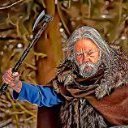
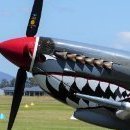
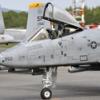

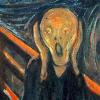
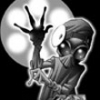
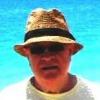
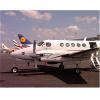

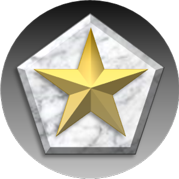

.thumb.jpg.0bac681e0da8e4ed7557610e98fda908.jpg)
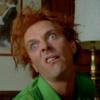
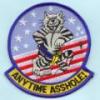
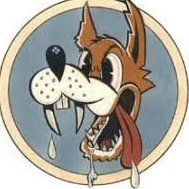




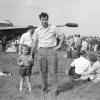

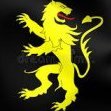



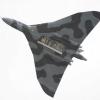
.thumb.jpg.d63052df9f30de247fb49bf44f442289.jpg)
